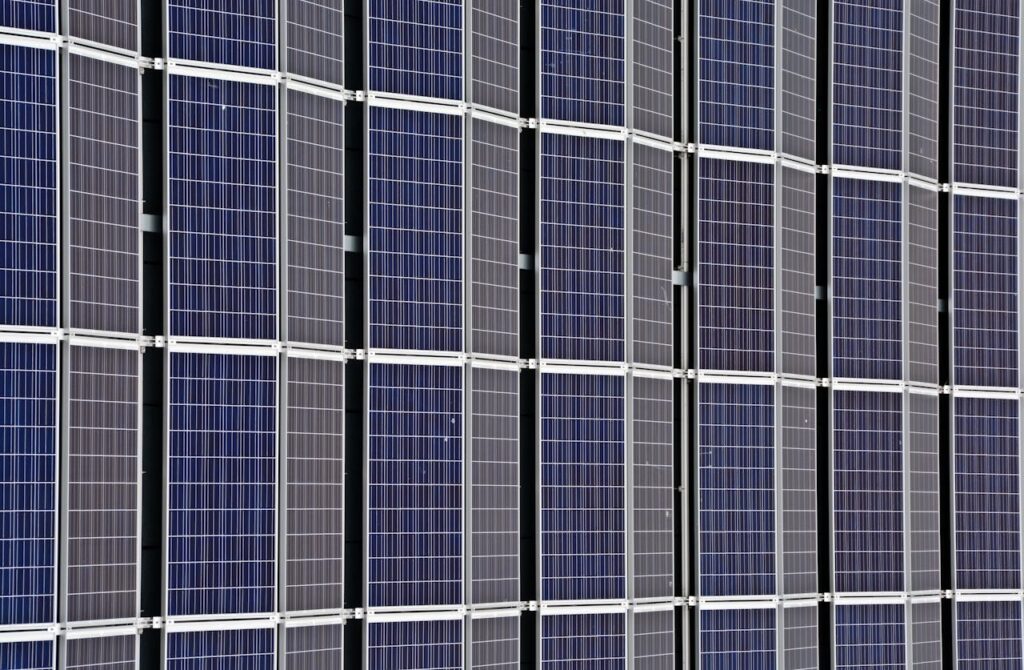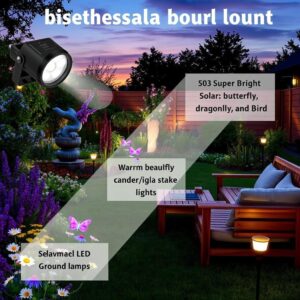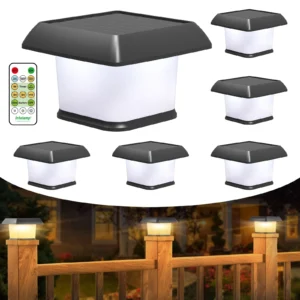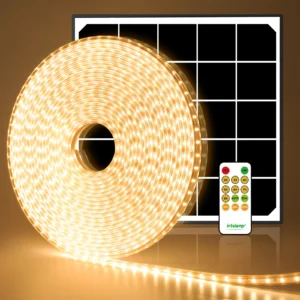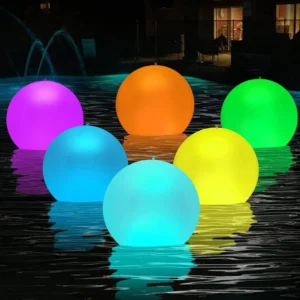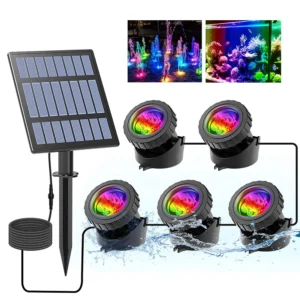How Can We Harness the Sun’s Energy?
Battery!
With a storage battery and a few AC outlets for powering small appliances, devices, lights, and even power tools, this sort of arrangement begins to appear more familiar. “Plug-and-play” systems are typically under 100 watts and compact enough to be carried anywhere. Consider them a quiet substitute for a small gas-powered generator. Camping, emergency electricity, recreation, powering small garages and utility buildings, and other similar purposes are all possible with them. Prepackaged systems are available from providers, or you may create your own from individual components.
Key Components of a Solar Power System
Between the solar panel and the devices that use the electricity, many pieces of electrical equipment are added in this system:
• Charge controller
The amount of electricity entering into the battery is regulated by a charge controller, which protects the battery from being overcharged.
• 12-volt battery
When the sun is shining, the battery stores the energy and makes it available at night.
• Inverter
The inverter transforms DC electricity from the battery into AC power, which most appliances and gadgets require. Although DC appliances and lights are available, there is a limited range and they are sometimes more expensive. DC appliances and lights, on the other hand, do not require an inverter.
• Small catastrophe fuse
A small-capacity fuse is installed on the positive wire between the battery and the PV panel as a safety measure.
Solar Power for Yurt Living
Living in a yurt, often associated with simplicity and sustainability, pairs perfectly with solar power. A basic solar power system can transform the off-grid yurt lifestyle by providing essential electricity for small appliances and lighting without the need for traditional power sources. With a battery at the heart of the system, energy collected during daylight hours is stored for use at night or on cloudy days.
Yurts, by design, are efficient and compact spaces, so even a small solar setup can be quite impactful. Solar power can run LED lights, charge phones, and power a small fan or laptop. By utilizing efficient energy-saving devices, the stored power can last longer, making it a reliable solution for those living remotely or temporarily. Solar systems for yurts can range from small portable units that can be set up and taken down easily, to more permanent installations with higher power capacity. These setups often feature a charge controller to regulate the flow of electricity and prevent battery overcharging, ensuring the longevity of the system.
The scalability of solar power in yurts allows users to start small, perhaps with just lighting and charging, and gradually expand the system as needed. This not only makes yurt living more comfortable but also emphasizes the harmony between modern convenience and a low-impact lifestyle.
Solar-Powered Road Signs
Solar-powered road signs are an increasingly common sight on highways and streets worldwide. These signs utilize photovoltaic (PV) panels to capture sunlight during the day and convert it into electrical energy, which is stored in a battery. This stored energy powers the lights and electronic displays on the signs, allowing them to function without being connected to the electrical grid. This setup is particularly valuable in remote or rural areas where access to electricity is limited or too costly.
One of the key benefits of solar-powered road signs is their ability to operate independently of external power sources, reducing installation and operational costs. The battery plays a crucial role in the system by ensuring the sign remains illuminated even after the sun sets or during periods of cloudy weather. A charge controller is also integrated to manage the energy flow and prevent the battery from overcharging, which can lead to damage or reduced efficiency.
These signs are not only energy-efficient but also environmentally friendly, as they reduce reliance on fossil fuels and lower carbon emissions. Additionally, solar-powered road signs require minimal maintenance compared to traditional signs that rely on external power sources. They are also highly versatile, being used in a variety of applications such as speed limit signs, construction warnings, pedestrian crossings, and emergency alerts. The durability and self-sufficiency of solar-powered road signs make them an ideal solution for modern road infrastructure, ensuring safety and visibility regardless of weather conditions or grid failures.
By leveraging solar energy, these road signs contribute to a sustainable and cost-effective approach to public safety, making them a growing trend in both urban and rural transportation systems.
Solar Panels in Buoy Lights
Buoy lights, essential for maritime navigation, are increasingly powered by solar panels. Traditionally, buoy lights required costly and maintenance-intensive power sources, often relying on generators or conventional batteries that needed frequent replacement. However, the introduction of solar technology has revolutionized buoy lighting by providing a highly efficient, low-maintenance, and cost-effective solution.
Solar panels mounted on buoys capture sunlight during the day, converting it into electricity that is stored in a battery. This stored energy powers the light during the night or in poor weather conditions when visibility is low. With advancements in solar and battery technology, modern buoy lights are capable of operating for extended periods without requiring any external power sources or human intervention.
One of the greatest advantages of using solar power in buoy lights is their ability to function in remote and harsh marine environments. Solar-powered buoy lights are particularly well-suited for areas far from shore, where running electrical cables or replacing traditional batteries is impractical. The durability of solar panels ensures they can withstand constant exposure to saltwater, wind, and changing weather conditions, all while continuing to generate energy reliably. Furthermore, these systems typically come equipped with charge controllers to regulate the energy flow and protect the battery from overcharging, ensuring a longer operational lifespan.
In addition to the reliability of solar-powered buoy lights, they are also incredibly cost-effective. Once installed, the ongoing operational costs are minimal since the sun provides a free, renewable energy source. Maintenance requirements are significantly reduced compared to traditional power systems, which means less time spent servicing the buoys and more time ensuring safe navigation for vessels.
Solar-powered buoy lights also have environmental benefits. They reduce carbon emissions by eliminating the need for fuel-powered generators or disposable batteries, aligning with global efforts to reduce the environmental impact of maritime activities. With their energy efficiency, low cost, and sustainability, solar panels in buoy lights offer a superior alternative to conventional power sources, ensuring that waterways remain well-lit, safe, and eco-friendly.
Portable Solar Power for Off-Grid Trips
For outdoor enthusiasts, campers, or those embarking on off-grid trips, portable solar power is an invaluable resource. Unlike traditional power sources, such as gasoline generators, portable solar systems are cleaner, quieter, and much more lightweight, making them ideal for adventures where convenience, sustainability, and efficiency are top priorities.
A typical portable solar setup for off-grid trips consists of foldable or compact solar panels combined with a deep-cycle battery, which stores the energy generated by the panels during the day. This stored energy can then be used to power a variety of devices, from charging smartphones and cameras to running lights, portable fridges, or even small electronics such as laptops and GPS systems. Deep-cycle batteries are designed to be charged and discharged repeatedly without losing their efficiency, making them perfect for temporary power needs in remote locations.
One of the greatest benefits of using solar power during off-grid trips is the ability to tap into an unlimited, renewable energy source—the sun. As long as the sun is shining, you can continue generating electricity without worrying about fuel supplies or noise pollution. Unlike gas-powered generators, which can be cumbersome, noisy, and emit fumes, portable solar systems offer a silent and environmentally friendly alternative. Their light weight also means that they can be easily carried in a backpack, camper, or vehicle, without adding unnecessary bulk or burden to your travel gear.
Portable solar kits come in various sizes, allowing you to choose a system tailored to your power needs. Smaller systems are sufficient for charging handheld devices, while larger setups can power camping equipment, lights, or even an emergency medical device. The flexibility of these systems also allows for expansion, meaning you can start with a basic kit and add more panels or higher-capacity batteries as needed.
Additionally, portable solar power is particularly advantageous in situations where you may be staying in one location for an extended period. While hiking, fishing, or enjoying a remote beach, your solar panels can continuously charge your battery throughout the day, ensuring that you have power available when the sun goes down. Some systems even feature inverters, allowing you to convert the stored DC power to AC for more versatile device compatibility.
Solar power also provides a reliable backup in case of emergencies. Whether you’re deep in the wilderness or in an area prone to natural disasters, having an independent power source can be a lifesaver. It ensures that your essential devices remain charged and functional without relying on traditional grid access or fuel-based generators.
With portable solar power, off-grid trips become more sustainable and convenient. Whether you’re camping in the mountains, staying in a remote cabin, or traveling in an RV, these solar systems offer a clean, quiet, and renewable solution to all your temporary power needs.

